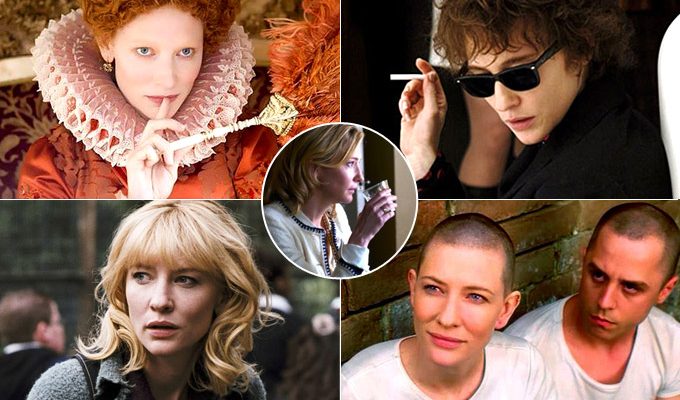 “Little Fish” (2005)
“Little Fish” (2005)
With Blanchett already a big star due to “The Lord of the Rings” and having won her Best Supporting Actress Oscar for the previous year’s “The Aviator,” she showed her willingness to switch it up by heading back to Australia for this indie, Rowan Woods’ tale of a heroin-cursed family in Sydney “Little Fish.” (Woods’ last feature had been “The Boys” a film that had been extremely successful in Australia). A gritty story set with an unmistakably authentic eye in the Little Saigon neighbourhood of Sydney (and featuring Vietnamese actor Dustin Nguyen of “21 Jump Street” fame—a fact that probably excites no one but our 12-year-old self), Blanchett plays recovering addict Tracy, who is trying to stay clean and build a life for herself, even while her ex-boyfriend, ex-stepfather and brother (Martin Henderson) are all, whether consciously or not, conspiring to bring her back into that world. But Tracy is the film’s heart (along with her quietly decent and heartbroken mother played by Noni Hazelhurst), and she makes stupid choices but is almost always motivated by nobler intentions. And it’s her conflicted but loving relationship with her “Lord of the Rings” co-elf Hugo Weaving, who plays the junkie stepdad that really lifts the film out of being just another kitchen-sink drugs-and-breadline drama. In its grim, often ugly, suburban aesthetic, and with Blanchett’s luminosity dialed right down under layers of unflattering jeans and greasy hair, it couldn’t be further away from the ethereal suspended fountains of Middle Earth or the Old Hollywood of Katharine Hepburn, but Blanchett disappears into the role here too, treating Tracy with fully as much dignity as any of her more glamorous characters. She makes us care to the degree that the sad little grimy plan that goes awry at the end of the film takes on all the resonance of tragedy.
What Did Cate Say About It? “These are people who have had exciting and hopeful dreams in their twenties, which have all been dashed on the rocks, and now they have to re-apprentice themselves to their parents and try and work out who they are in their thirties. This is a whole group of deeply uncool and unfashionable people who never get represented in cinema.”
 “I’m Not There” (2007)
“I’m Not There” (2007)
Ok, so the Academy deemed Blanchett’s turn as Bob Dylan Proxy Jude Quinn in Todd Haynes’ baffling, occasionally infuriating, but always interesting homage, as a supporting performance, presumably based purely on the amount of screen time she gets. But in a big, sometimes incoherent jumble of film, populated with other proxies and various other riffs on Dylan’s personas, Blanchett’s Quinn is for us absolutely the central role. The surprise of her playing a man, and delivering a relatively decent physical approximation of Dylan wears off pretty quickly, though, because the really treasurable aspect of this performance is how soon we forget the gender-bending gimmick of it, and become compelled by the character in his own right. Blanchett nails the musician’s mercurial, almost painful, intelligence and twitchy charisma, and especially in those scenes in which an interview with Bruce Greenwood’s BBC reporter seamlessly interweaves elements that sound like they came directly from a particularly prickly Dylan interview, with complete fabrications that make Jude Quinn more a person than a proxy. But again, it’s Blanchett’s reserve that really works in the role’s favor here—the character is one who has an enormous, blinding talent that keeps him in the public eye, but who is also at heart an intensely private person and perhaps sensing a certain kinship, it feels like Blanchett really knows the landscape of that particular purgatory. She doesn’t ever try to explain him to us (in fact Haynes’ film overall is remarkable for kind of never staring directly at Dylan, like he is an eclipse or something), because that would be dishonest—he is ultimately an enigma after all. Instead, as so often with her best characters, she manages to embody all his contradictions in such a way that they all feel part of a single human whole, however odd a human it may be.
What Did Cate Say About It? “I was terrified doing it because [Todd Haynes] and I had no interest in imitating Dylan. But yet Todd was really specific that I wore a suit that he wore in 1965, like the exact suit that he wore in Manchester. And the hair… He wants those iconic references but yet he doesn’t want an imitation. It was a really difficult tightrope to walk, which I hope I walked without falling off too often. “

